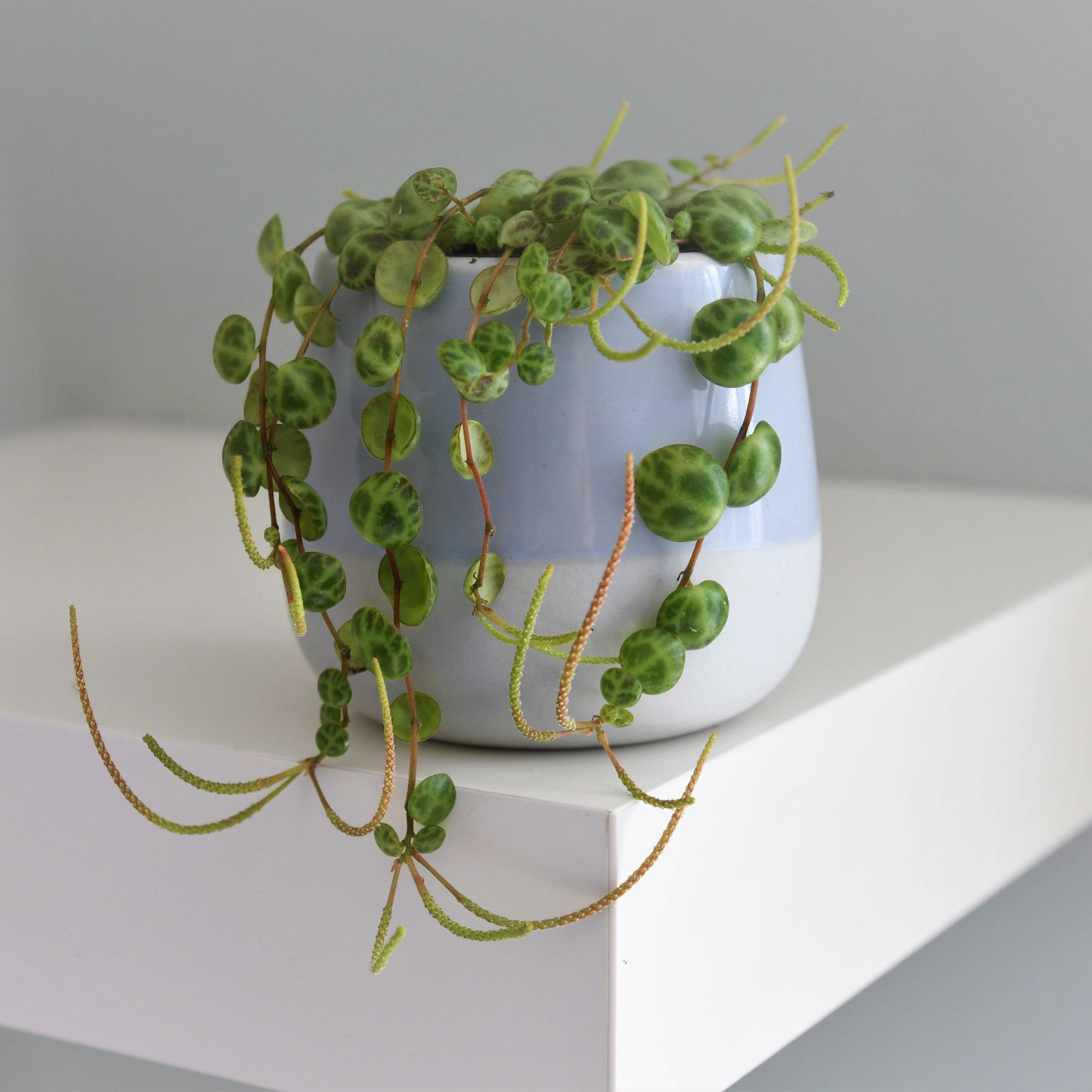
String of turtles are so easy to propagate. Simply snip a stem and place it in water for a few weeks.
One of the most eye-catching houseplant ideas, string of turtles make a beautiful addition to any room of the home. 'Personally, the Peperomia Prostrata is one of my favourites to propagate and share with friends, as they root super fast in water and when given a prune, the mother plant becomes a little fuller and bushy,' says Sonia Kainth from House of Kojo.
Before you set about propagating, make sure that you know how to care for a string of turtles to ensure that both the cutting and the mother plant thrive.
How to propagate a string of turtles
What you'll need
- Large String of turtles plant
- Snips, like these Spear & Jackson snips from Amazon
- Container – like a vase, tumbler or shot-glass
- Water
- Nursery pot for potting on, like these seed starting pots from Amazon
Step-by-step guide
1. Take your cutting

Using clean snips, take a cutting of the vine. Remove the lower leaves – you should have four to five leaves left on the vine. This is the most straightforward way to propagate plants (especially if you take cuttings the Monty Don way).
'As with a lot of the string-variety hanging plants, they provide great value for money by growing at such a rate that you’ll find yourself needing to give them a haircut! When one string gets particularly long in comparison to the rest, I give it a snip just above a node,' says Andy Little, houseplant buyer at British Garden Centres. You can then use these cuttings to propagate.
2. Fill your container with water

As with propagating monstera, string of pearls can easily be propagated in water. You could even use leftover dehumidifier water for plants (also known as grey water).
Fill your propagation vessel with water – a small vase or shot glass works perfectly. Opt for a clear-sided container so that you can easily see the roots grow.
If you are planning to grow a lot of cuttings then it might be worth creating a propagation station – here are our picks of some propagation stations you can purchase online to get started.
3. Submerge cutting

Remove the leaves from the lower part of the cutting and submerge under water. Change the water every couple of days to prevent a build-up of algae. The roots should start to appear within 3 to 4 weeks.
4. Pot on

Once the roots are a couple of inches long, you can then pot on. Handle your rooted cutting with care as the leaves are very delicate. Opt for a small pot – just big enough to house the roots – as this will prevent there from being an excess of soil which will retain unneeded water and can cause root rot.
‘Peperomia prostrata require good drainage to prevent their fragile roots from rotting, so use a mix of coco coir, fine pine bark and perlite and plant into a shallow pot,’ says Lisa Price, founder of Root Houseplants.
FAQS
Can you propagate string of turtles in soil?
Yes, you can propagate string of turtles in soil. Using clean snips, take a cutting of the vine – choose one that has four to five leaves.
To grow in soil, ‘place the cutting on a shallow pot of the same potting mix you’re using for the mother plant, spray with water to make it damp. Then, use a wire to pin the cutting in place,’ says Lisa Price, founder of Root Houseplants.
‘Cover with a clear plastic bag to raise humidity, opening it occasionally for aeration.’ Roots should appear in a couple of weeks. ‘To check if roots have developed, gently tug to see if there is any resistance in the soil. Once it has well-established roots, transplant into a new pot,’ adds Charly Beckett from Between Two Thorns.
Will String of Turtles root in water?
Yes, string of turtles do root in water and they do so very quickly. Simply take your cutting and submerge the end of the vine in water – it should take a couple of weeks for the string of turtles to root.
Should you trim strings of turtles?
You should trim a string of turtles in order to keep the plant healthy and at a more manageable size. 'Trimming away elongated stems or yellowing leaves stimulates new growth and prevents diseases. This simple act of care can keep your plant looking healthy,' explains Emily Lawlor, owner of Happy Houseplants. You can then use the vines you've trimmed off to propagate.







